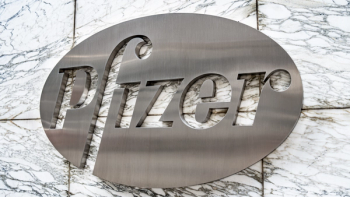Key Takeaways
- Imaavy shows sustained generalized myasthenia gravis (gMG) symptom control through week 24: In indirect comparisons, Imaavy (nipocalimab-aahu) consistently outperformed other approved FcRn blockers in MG-ADL score improvement across multiple timepoints.
- Statistically significant advantages emerged as early as week eight: Population-adjusted indirect treatment comparison (ITC) results showed mean differences ranging from –2.36 to –3.14 versus comparators, with significance maintained through week 14 and beyond.
- No head-to-head trial data currently exists among FcRn blockers: The analysis used ITC methods—population-adjusted and placebo-anchored—to evaluate efficacy, but did not assess safety outcomes.
Results from the Phase III VIVACITY-MG3 trial (NCT04951622) show that Johnson & Johnson’s (J&J) Imaavy (nipocalimab-aahu) delivered more consistent and sustained disease control than other approved FcRn blockers in adults with generalized myasthenia gravis (gMG). According to the trial investigators, Imaavy achieved comparable onset of symptom relief by week one and produced greater or statistically significant improvements in Myasthenia Gravis-Activities of Daily Living (MG-ADL) over 24 weeks.1
How Does Imaavy Compare to Other FcRn Blockers in Treating gMG?
“These analyses provide useful population-adjusted comparative data and add to the body of evidence supporting the use of Imaavy for the treatment of gMG for certain patients,” said Saiju Jacob, MD, professor, department of immunology, immunotherapy at University of Birmingham, UK, in the press release. “The significantly greater mean improvements on MG-ADL scores with Imaavy reflect important new evidence of the ongoing need for sustained disease control in a chronic condition like gMG.”
Key VIVACITY-MG3 Trial Design Details
- The multicenter, randomized, double-blind, placebo-controlled VIVACITY-MG3 trial evaluated the safety, efficacy, pharmacokinetics, and pharmacodynamics of Imaavy in 196 adult patients.
- Patients were randomly assigned in a 1:1 ratio to receive either Imaavy plus the current standard-of-care (SOC) or placebo plus SOC.
- The primary endpoint of the trial was comparison of the mean change from baseline to weeks 22, 23, and 24 between treatment groups in the MG-ADL total score.
- A notable secondary endpoint was change in Quantitative Myasthenia Gravis score.1,2
Results from an Indirect Treatment Comparison
- Results from an indirect treatment comparison (ITC) show that Imaavy demonstrated a mean difference of –2.36 at week eight (95% CI: –3.56 to –1.16; P = .001), with this treatment advantage maintained through week 24 compared to one FcRn blocker.
- Compared to another blocker, the treatment demonstrated a mean MG-ADL improvement of –2.38 (95% CI: –3.57 to –1.18; P < .001) at one dose and –3.14 (95% CI: –4.15 to –2.14; P < .001) at the other, both observed at week 10 and continuing through week 14.
- In an additional placebo-anchored ITC analysis, Imaavy also showed numerically greater efficacy compared to another FcRn blocker, although statistical significance varied by timepoint.
- At week eight, the mean MG-ADL improvement was –1.24 (95% CI: –2.78 to +0.30), and at week 18, it was –1.13 (95% CI: –2.77 to +0.50), neither of which reached statistical significance.
- By week 20, Imaavy showed a –1.44 mean improvement (95% CI: –3.21 to –0.33) and a –2.89 difference (95% CI: –5.67 to –0.12) at week 24.3
Limitations and Disease Burden Context
J&J stated that the ITC was not designed to evaluate the safety of FcRn blockers and no head-to-head clinical trial data currently exist among these agents.1
According to the Myasthenia Gravis Foundation of America, approximately 37 out of every 100,000 people in the United States live with MG. Globally, the prevalence ranges from 150 to 200 cases per million. While most common in women under 50 years of age, MG can affect individuals of any gender and age.4
Company Outlook
“At Johnson & Johnson, we recognize that for people living with gMG, the goal isn’t just temporary relief, but rather sustained disease control,” said Katie Abouzahr, MD, VP, autoantibody portfolio, maternal fetal immunology disease area leader, Johnson & Johnson Innovative Medicine, in the press release. “This analysis provides additional insights into the profile of Imaavy and highlights its potential as a reliable treatment option for appropriate patients aged 12 and older living with gMG. As we continue to research the potential impact of Imaavy and work with regulators worldwide, we are committed to helping patients with chronic, debilitating autoantibody conditions, like gMG.”
References
- IMAAVYTM (nipocalimab-aahu) showed greater sustained disease control versus approved FcRn blockers for generalized myasthenia gravis (gMG) at multiple timepoints over 24 weeks in newly published indirect treatment comparison (ITC). J&J. June 24, 2025. Accessed July 1, 2025. https://innovativemedicine.jnj.com/newsroom/immunology/imaavytm-nipocalimab-aahu-showed-greater-sustained-disease-control-versus-approved-fcrn-blockers-for-generalized-myasthenia-gravis-gmg-at-multiple-timepoints-over-24-weeks-in-newly-published-indirect-treatment-comparison-itc
- A Study of Nipocalimab Administered to Adults With Generalized Myasthenia Gravis. Clinicaltrials.gov. Accessed July 1, 2025. https://www.clinicaltrials.gov/study/NCT04951622
- Imaavy Outperforms Other FcRn Blockers in Sustained gMG Symptom Control. Practical Neurology. June 30, 2025. Accessed July 1, 2025. https://practicalneurology.com/news/imaavy-outperforms-other-fcrn-blockers-in-sustained-gmg-symptom-control/2475453/?utm_source=chatgpt.com
- Overview of MG. Myasthernia. Accessed July 1, 2025. https://myasthenia.org/understanding-mg/overview-mg/





